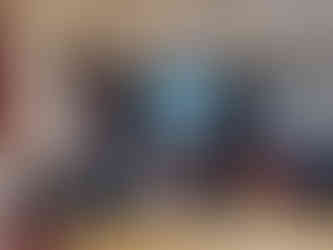Workshop: The Sun, An Introduction to Viewing and Imaging
- Clive Inglis

- Oct 27
- 3 min read
On the 27th of October, a group of Flamsteed members gathered at Mycenae House to listen to a talk on “The Sun: An Introduction to Viewing and Imaging” given by Flamsteed member Tim Rickard. Tim is an experienced solar observer and a regular volunteer at the society’s solar observing outreach sessions at the Royal Observatory.

Tim started his talk by covering the health and safety considerations when observing the Sun. He then went on to explain how the Sun’s photosphere can be safely viewed in broadband (white light) using solar glasses or by solar projection, giving the example of the solar projection system used by Flamsteed volunteers during solar observing at the ROG. He also explained how to view the Sun’s photosphere through a telescope, either using a neutral density filter covering the telescope’s objective or a Herschel wedge at the telescope’s eyepiece.
Tim then moved on to discuss his experience observing the Sun in narrowband using plug-in modules for astronomical telescopes from manufacturers such as Daystar (Quarks), Lunt and Antlia. He also mentioned avoiding screw-in filters, which are too broadband to be of any use for solar observing.
He described the range of narrowband Quark eyepieces produced by Daystar and his experience with the hydrogen-alpha and sodium-line eyepiece modules.Tim explained how these are “tuned” into their operating waveband by heating elements. These eyepiece modules also include a Barlow lens system, making it difficult to capture a full solar image unless you are using a short focal length telescope. The image produced by these eyepiece modules is also susceptible to Newton’s Rings.
Discussing the Lunt plug-in modules, Tim related his experience using a CaK Lunt module with an energy rejection filter fitted to his 152mm/1900mm focal length Maksutov telescope. In his experience, this Lunt module gives more contrast, greater resolution, and allows shorter exposures than the Daystar Quarks.
Moving on from plug-in modules to complete solar telescopes, Tim introduced his Coronado 70mm SolarMax III - a slightly larger aperture than the 60mm telescope used in our solar observing sessions. He discussed the pros and cons of adding a second etalon filter to the telescope’s aperture to make the passband even narrower and improve detail. This is known as double stacking.
Tim then touched on mounts suitable for solar viewing and listed cameras used to capture solar images. These include DSLR cameras, mobile phones, and dedicated digital cameras, both CCD and CMOS. He uses two CMOS cameras - a ZWO ASI183MM and a ZWO ASI678MM - both monochrome. Although colour cameras can be used, narrowband imaging creates an image at a very precise wavelength with little RGB colour information. This allows the use of monochrome digital cameras, giving greater resolution than a colour camera with the same sensor chip size. Tim gave some practical tips on camera alignment and how to achieve a good focus.
During the short break which followed, we were able to look at the equipment Tim had brought along and referred to during his talk: a Skywatcher AZEQ6 mount fitted with Tim’s 152mm/1900mm focal length Maksutov telescope and two small refractors, and a Coronado 70mm SolarMax III. Tim answered questions about this setup from those gathered around the Mak, while Mike Meynell helped out by answering questions from those looking at the SolarMax.
Tim and Mike answer questions during the break. Pictures by Simon Hurst
Tim restarted the talk by giving guidance on computers, cabling, and software for image capture and processing. He uses SharpCap to capture solar images using the “lucky imaging” technique - capturing around 1000 images with exposure times as short as seeing conditions allow. He then uses AutoStakkert! V4 to analyse these images and produce a stacked image of the best.
Post-processing is then carried out using Astra Image software, applying unsharp masking and edge-sharpen filters, with the aim of increasing local contrast and bringing out detail. Astra Image also has the ability to change the contrast of large features differently from smaller ones. Tim prefers to keep his image processing in black and white rather than adding false colour.
This has been a brief summary of Tim’s presentation. The full presentation material is available on the Flamsteed website using the following link:
Many thanks to Tim for his excellent talk and to Mike for his assistance during the break. The talk was very well received by the 36 members present, showing that the topic has proved to be very popular amongst the membership.























Comments